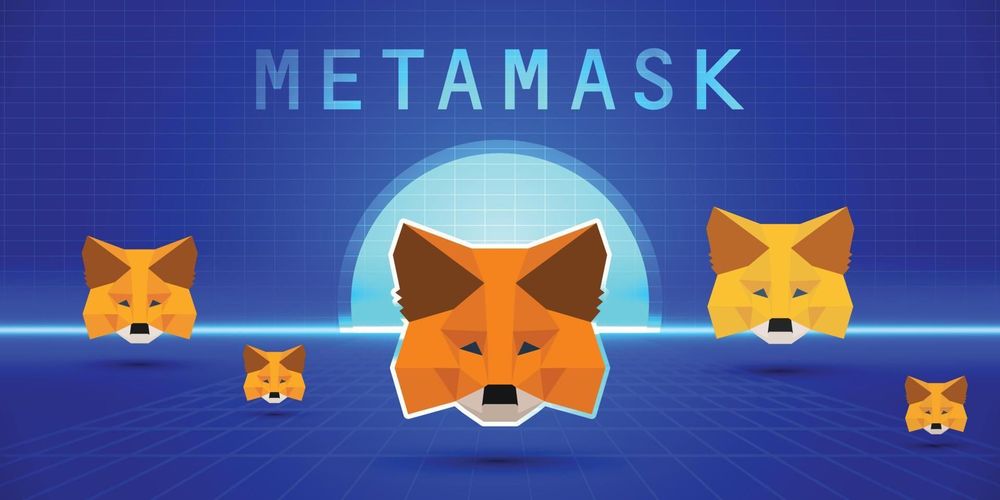Getting Started with Metamask: A Beginner’s Guide

The world of cryptocurrency and decentralised finance is growing fast. This makes a reliable wallet essential for beginners. MetaMask is one of the most popular Ethereum wallets and has more than 100 million users worldwide. MetaMask provides a simple and secure experience whether you are storing ETH, trading ERC-20 tokens, or exploring NFTs and dApps.
MetaMask is a self-custodial hot wallet and it gives you complete control over your assets while connecting seamlessly to Ethereum and other EVM-compatible networks like Polygon and BNB Chain. This is your ultimate guide to MetaMask, which covers everything from installation and security to funding and everyday use.
What Is MetaMask and Why Beginners Use It
MetaMask is more than just a crypto wallet, it is a gateway to Web3. The non-custodial software wallet was launched in 2016 and it lets you store, send, and receive cryptocurrencies on Ethereum and compatible blockchains. Unlike centralised exchanges, where a third party holds your keys, MetaMask ensures you control your private keys, embracing the principle “not your keys, not your crypto.”
Key beginner-friendly features include:
- Browser and Mobile Access: Works on Chrome, Firefox, Edge, Brave, and iOS/Android.
- dApp Integration: Connect to apps like Uniswap, OpenSea, and Aave.
- Built-in Swap and Bridge: Exchange tokens or move assets between networks directly.
- Multi-Chain Support: Add networks like Polygon and Arbitrum.
- Security Options: Pair with hardware wallets for added safety.
MetaMask is free, user-friendly, and widely adopted making it one of the best starting points for anyone exploring DeFi, NFTs, or blockchain applications.
How to Download and Install MetaMask
Getting MetaMask running takes just a few minutes.
Always download from the official metamask.io site to avoid scams.
Installing the Browser Extension
- Go to metamask.io and click Download.
- Choose your browser (Chrome, Firefox, Edge, or Brave).
- Add the extension—MetaMask’s fox icon appears in your toolbar.
- Pin the extension for quick access.
Setting Up the Mobile App
- Download “MetaMask” from the Apple App Store or Google Play.
- Launch the app, agree to terms, and allow basic permissions.
Tip for Beginners: Start with the browser version for easier dApp use. Use mobile if you want to manage crypto on the go.
Creating and Securing Your MetaMask Wallet
Once installed, it’s time to create your wallet.
Creating a New Wallet
- Open MetaMask and click Get Started.
- Select Create a Wallet and set a strong password.
- MetaMask shows your 12-word Secret Recovery Phrase. Write it down offline—never save digitally.
- Confirm the phrase to activate your wallet.
Importing an Existing Wallet
If you already have a wallet, select Import Wallet and enter your recovery phrase.
Security Best Practices
- Never share your recovery phrase—it grants full access to your funds.
- Enable auto-lock after a few minutes of inactivity.
- Beware of phishing—official MetaMask support will never ask for your keys.
- Use hardware wallets like Ledger or Trezor for larger holdings.
Beginner Warning: Lose your recovery phrase, and your funds are gone forever. Back it up securely.
Funding Your MetaMask Wallet
A wallet is useless without funds. Here’s how to add crypto:
- Buy in MetaMask: Use the Buy button to purchase ETH or other tokens via providers like Transak or MoonPay. Fees vary by region.
- Transfer from an Exchange: Copy your MetaMask address and withdraw from platforms like Binance or Coinbase. Start small to confirm success.
- Receive from Another Wallet: Send assets from any wallet using your address.
- Swap Inside MetaMask: Convert ETH to stablecoins or tokens directly within the wallet.
Gas Fees: Ethereum transactions require ETH to pay “gas.” For lower fees, consider Layer 2 networks like Polygon or Arbitrum.
Everyday Use: Sending, Swapping, and dApps
With funds in your wallet, you can start exploring Web3.
Sending and Receiving
- To send, click Send, enter the recipient’s address, amount, and confirm.
- To receive, share your address or QR code.
Swapping and Bridging
MetaMask’s swap tool lets you trade tokens directly. Bridges enable moving assets across chains.
Connecting to dApps
- Switch to the correct network (Ethereum, Polygon, etc.).
- Visit a dApp (like Uniswap) and click Connect Wallet.
- Approve permissions—always review before confirming transactions.
Pro Tip: Enable test networks in settings and practise with free test tokens before risking real funds.
Troubleshooting and Pro Tips
Even beginners may run into issues. Here are quick fixes:
- Insufficient Funds: Keep extra ETH for gas.
- Connection Errors: Clear cache, restart browser, or check Etherscan for network status.
- Forgot Password: Restore with your recovery phrase.
- Slow Transactions: Speed up by increasing gas fees.
Pro Tips for Beginners
- Use Incognito mode for extra privacy.
- Keep MetaMask updated for security patches.
- Enable biometric locks on mobile.
- Join the MetaMask community for guides and updates.
Conclusion
Now you know how to set up and use MetaMask confidently. From installation to sending crypto, swapping tokens, and exploring dApps, this wallet is your entry point to Web3.
Remember: security is your responsibility. Always back up your recovery phrase, start with small transactions, and stay alert for scams. As your confidence grows, you can explore MetaMask Snaps for added features or pair a hardware wallet for maximum safety.
Updated on: 13th October, 2025 3:29 PM